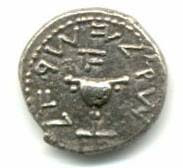Had a call from a client this morning.
A good, solid, experienced shooter. Lots of trigger time and dry-fire time.
He had been dry-firing at home in his basement and had put his pistol down on his table.
He picked up the pistol to shoot it again, aimed at his target, squeezed the trigger and . . .
BANG!!!!!!
The incident was described to me as time standing still, he could hear the 'tink' of the brass that ejected hitting his table, he saw the dust fall from the ceiling and only then had a nice ringing in his ears.
His immediate reaction was WTF!?!?!
He had picked up his carry gun he had taken off and put on the table and which was identical to the gun he had been dry firing, rather than the gun he was dry-firing.
Ooops.
Luckily, he still had the gun pointed in a safe direction at a wall when the shot went off. It went through the drywall and then stuck behind it and did not exit anywhere. Some ringing in the ears and that was the extent of the damage. Apparently no one outside the house heard the shot go off in his basement either. No physical harm nor legal repercussions for the negligent discharge.
"That'll never happen to me", you say.
Hopefully not, but you're human, and at some point in the future you are likely to make a mistake. Whether through complacency, carelessness, or clumsiness, you may very well put a hole where it was neither intended nor desired.
The idea is to mitigate the damage from that future moment of negligence that may hopefully never take place but is just waiting for you to slip up and for the opportunity to happen.
When dry-firing, make sure there is no live ammunition in the room where you are practicing. Unload and clear the gun you are going to dry-fire in another room before you even go to the room you are dry firing in.
Make sure there are no live firearms or ammunition in the room you are dry firing in, as in none.
Before you begin to dry-fire, check again that the firearm is unloaded in chamber and magazine, really look, and check again, and then check one more time.
Make sure any practice magazines for reloads are similarly completely
empty of live rounds, which should all have been left behind in the
other room, right?
Make sure when you dry-fire that you still do not point the firearm at anything you do not want to destroy, and you have a solid backstop at all times. This will save you from complete disaster when you've managed to still manage to get a round chambered even after you swore up and down that the gun and magazines were empty. My client's incident is now having me rethink my habit of aiming toward the TV with targets arrayed in front of it while dry-firing.
If the gun leaves your immediate possession or you've put it down, and it is not in your hand or holster, stop and start your safety checks all over - check it again to make sure it is unloaded and you didn't just pick up its twin, or Murphy came by and did a swap of pistols - or more likely you did it in a fit of absent-mindedness.
If you practice under the impression that you will have an incident someday and you need to do everything possible to prevent it from happening and causing irreparable damage, you'll be a lot safer than saying "That'll never happen to me."

5 comments:
After someone proudly states that they've never had an accidental/negligent discharge, I suggest that they add the word, "yet" between the word "never", and the word "had".
If you shoot long enough, Murphy's Law catches up with you.
Luckily I was following the "muzzle in a safe direction rule" and no harm followed.
Details will not be forthcoming.
John in Philly - Yes, it is waiting to happen the moment you slip up. No need for details. I can bet you won't do the same scenario that led to that ND/AD ever again.
THis is why we ALWAYS point in a safe direction.
Like I say when I teach Pistol Safety courses. If you ALWAYS follow the 4 rules, then yu can (generally) fail one and still not have a tragedy...just an "incident".
Yep, happened to me. I was shooting my SIG 226 at the range and forgot that when you rack the slide, it goes to SA. I had it pointed downrange when the discharge occurred, catching me totally by surprise.
Even "NRA Certified Pistol Instructors" can have a lapse when handling firearms they're not familiar with!
Yes.
One tip: Use A-Zoom snap caps. They are red or orange and give you a chance to notice "hey, that's brass there".
Post a Comment